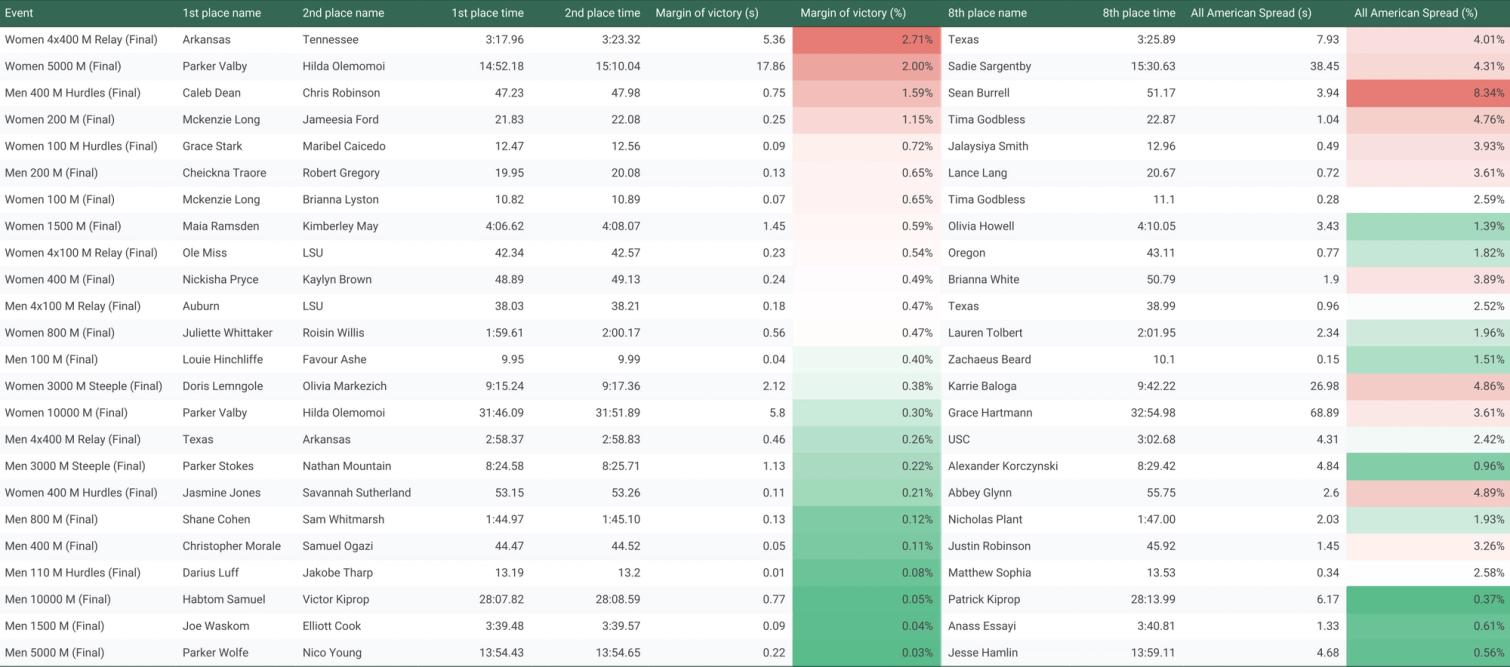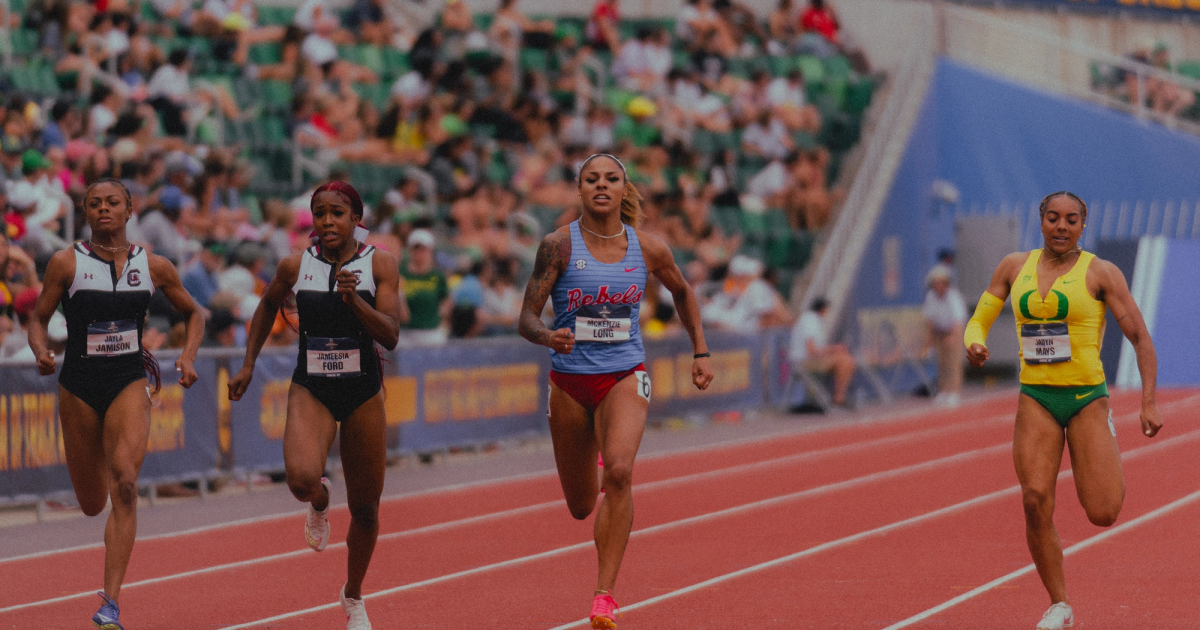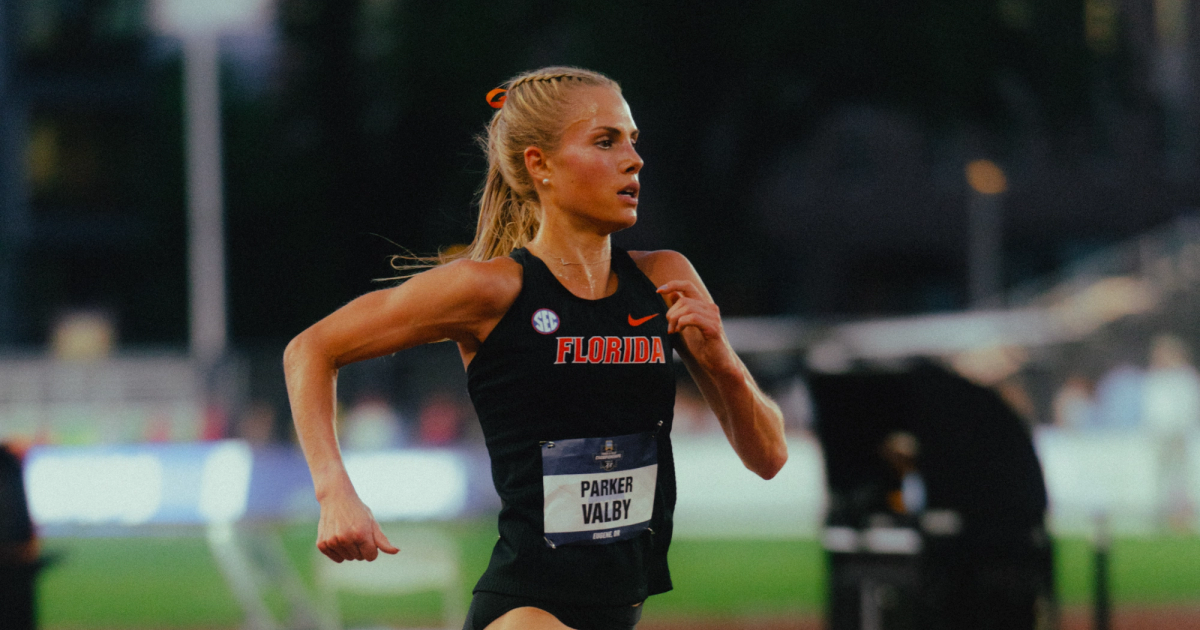By Rachel DaDamio
June 18, 2024
There were many standout performances at the NCAA championships – Ole Miss’ McKenzie Long winning three events, Florida’s Parker Valby coming super close Olympic standard, Virginia’s Shane Cohen outkicking the field in the 800m. While all the winners are impressive in their own right, I found myself wondering how to compare performances across events. Winning by one second means something very different in the 10k versus the 200m, and how do you compare a second on the track to a point in the heptathlon or a meter in the discus?
I looked at the results for every event in the NCAA championships and calculated each winner's margin of victory over the runner-up as a percentage. For example, let’s take Parker Valby’s win in the 5000m. She beat runner-up Alabama’s Hilda Olemomoi by almost 18 seconds, which represents a 2% margin of victory in a 15-minute race. To add additional context, the men’s 1500m and the women's 100m hurdles were both won by 0.09 seconds. But when you look at that same margin in percentage terms, it’s a whole different story – 0.04% in the 1500m and 0.72% in the 100m hurdles.
So, who were the NCAA’s biggest winners last weekend? On the track, that title goes to the Arkansas women’s 4x400m. They clinched the team title by winning the final event by over 5 seconds, a margin of victory of 2.17%. Texas’ Leo Neugebauer won the decathlon by 10.2% (830 points), making him the biggest winner for the field events and overall. The Arkansas women and Neugebauer set collegiate records with their dominant performances, a trend among the athletes with large margins of victory. The runner-up spots for biggest winner went to Valby in the women’s 5000m and Nebraska’s Rhema Otabor in the women’s javelin. They both set collegiate records and won by 2% and 5.75%, respectively.
I noticed two other key trends while digging into the data. First, the margin of victory in the field events tended to be larger than in the track events. This trend makes sense given that track races, especially the longer distances, can be very tactical at the championship level. Take the men’s 5000m, which had the smallest margin of victory on the track (0.03%, 0.22 seconds). NAU’s Nico Young ran almost a minute slower than his PR to finish second in the race, but equivalently tactical competitions don’t happen in the field events. Second, on the track, the men’s races tended to be closer than the women’s. The six closest track races were men’s events. Some explanation for that trend comes down to individual stories at play – Valby has not hit the Olympic standard yet, whereas Young and Harvard’s Graham Blanks, two favorites in the men’s 5000m, had already hit the standard and therefore did not have the same incentive to push a blistering pace.
The full table of victory margins can be found below. For the extra-invested track fans out there, I also included the percentage difference between first and eighth place (the first team All-American spread) as additional context.
The NCAA championships never disappoint and this year was no exception. I’m looking forward to watching (and analyzing!) many of these athletes as they compete throughout the summer!

2024 NCAA Track and Field Championships - Margins of Victory | Track Events

2024 NCAA Track and Field Championships - Margins of Victory | Field Events
You can listen to the full episode of Getting Chicked with Rachel DaDamio, Karen Lesiewicz and Megan Connelly on Apple Podcasts, Spotify or wherever you get your shows.

Rachel DaDamio
Rachel DaDamio ran at the University of Notre Dame and moved to Chicago after graduating to work as a data scientist, where she’s also training for a fall marathon.




